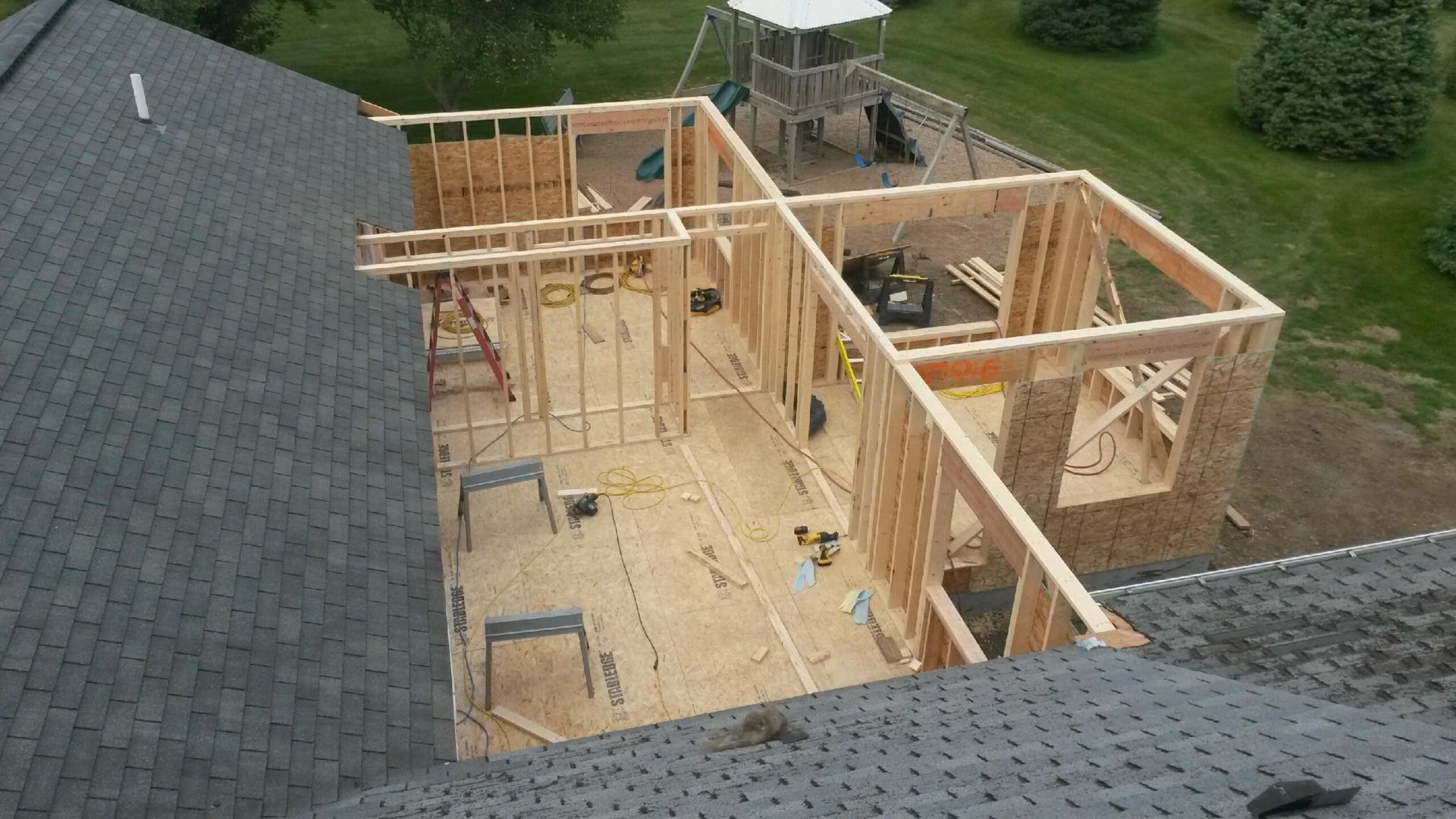Planning and Design: Adding A Bedroom To A House

Adding a bedroom to your house can be a significant project, but it’s also a great way to increase your living space and create a more comfortable home. There are several different ways to add a bedroom, each with its own set of pros and cons. To make the right decision, you need to consider factors like your budget, the size of your existing house, and your personal preferences.
Types of Bedroom Additions
The type of bedroom addition you choose will depend on your existing house’s structure and the available space. Here are some common options:
- Bump-out: A bump-out is a simple addition that extends an existing wall, creating a small, rectangular room. This option is relatively inexpensive and easy to construct, but it may not add a lot of space.
- Dormer: A dormer is a windowed structure built into a sloped roof, adding space and light to an attic. Dormers can be quite stylish and provide a unique view, but they can be more expensive and complex to construct than bump-outs.
- Second-story addition: A second-story addition involves adding an entirely new floor to your house. This is the most expensive option but provides the most space and can significantly improve your home’s value.
Comparing Bedroom Addition Options, Adding a bedroom to a house
Here’s a table that summarizes the pros and cons of each type of bedroom addition:
| Type of Addition | Pros | Cons |
|---|---|---|
| Bump-out | Inexpensive, easy to construct, minimal disruption to existing structure | Limited space, may not be suitable for all homes |
| Dormer | Adds space and light to attic, unique design features | More expensive than bump-out, complex construction, may require structural modifications |
| Second-story addition | Provides significant space, increases home value | Most expensive option, complex construction, requires significant structural modifications |
Permits and Approvals
Before you start building, you need to obtain the necessary permits and approvals from your local government. These requirements can vary depending on your location, so it’s essential to check with your local building department. Some common permits required for bedroom additions include:
- Building permit: This permit ensures that your project meets local building codes and safety standards.
- Electrical permit: This permit is required for any electrical work, such as installing new wiring or outlets.
- Plumbing permit: This permit is required for any plumbing work, such as installing new pipes or fixtures.
Bedroom Layout Design
Once you’ve obtained the necessary permits, you can start designing your new bedroom. Here are some factors to consider when planning your layout:
- Natural light: Ensure your bedroom has adequate natural light by strategically placing windows and skylights. This will create a more welcoming and comfortable space.
- Ventilation: Good ventilation is essential for a healthy and comfortable bedroom. Make sure your design includes sufficient ventilation to prevent moisture buildup and ensure fresh air circulation.
- Furniture placement: Plan the placement of your furniture to maximize space and create a functional layout. Consider the size and shape of your room and the furniture you plan to use.
Interior Design and Finishing

Now that the planning and design of your new bedroom are in place, it’s time to dive into the fun part: decorating and finishing! This is where your personality and style shine through, transforming the space into a haven that reflects your unique taste.
Bedroom Style and Color Scheme
The style and color scheme you choose will set the tone for the entire bedroom. Think about your personal preferences and how you want to feel in the space. Do you envision a cozy and calming retreat or a vibrant and energetic space? Consider popular styles like minimalist, bohemian, modern, or traditional, and experiment with color palettes that complement your chosen style. For instance, a minimalist bedroom might feature a neutral color scheme with pops of color in accent pieces, while a bohemian bedroom could embrace earthy tones and rich textures.
Incorporating Existing Furniture and Décor
Don’t underestimate the power of repurposing existing furniture and décor. This can save you money and add a unique touch to the new space. Consider how you can integrate existing pieces into the new design, perhaps by repainting or reupholstering them to match the new style.
Lighting and its Impact on Ambiance
Lighting plays a crucial role in setting the mood and functionality of a bedroom. Adequate lighting is essential for activities like reading, getting dressed, and applying makeup. Consider a combination of ambient, task, and accent lighting to create a layered and dynamic effect. Ambient lighting, typically provided by overhead fixtures, sets the overall tone of the room. Task lighting, such as bedside lamps or desk lamps, provides focused illumination for specific activities. Accent lighting, often achieved with strategically placed spotlights or lamps, highlights specific features and adds visual interest.
Essential Bedroom Features
To create a comfortable and functional bedroom, consider incorporating the following essential features:
- Storage Solutions: A well-organized bedroom is a peaceful bedroom. Maximize storage space with built-in wardrobes, drawers, shelves, or under-bed storage solutions.
- Window Treatments: Window treatments not only enhance privacy but also control the amount of natural light entering the room. Choose curtains, blinds, or shades that complement the style and color scheme of the bedroom.
- Bedding: Invest in comfortable and stylish bedding that makes you feel relaxed and refreshed. Consider factors like thread count, fabric type, and color when choosing sheets, blankets, and pillows.
